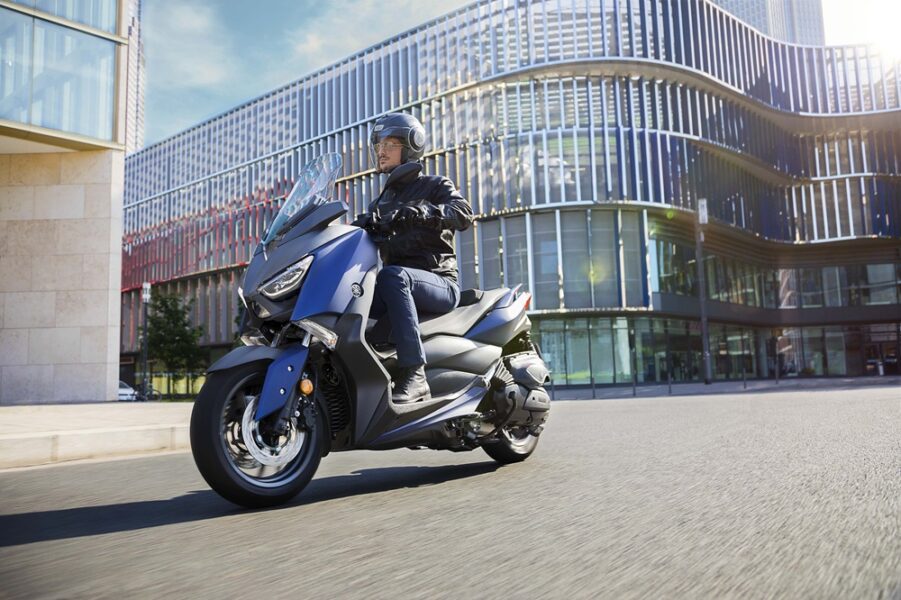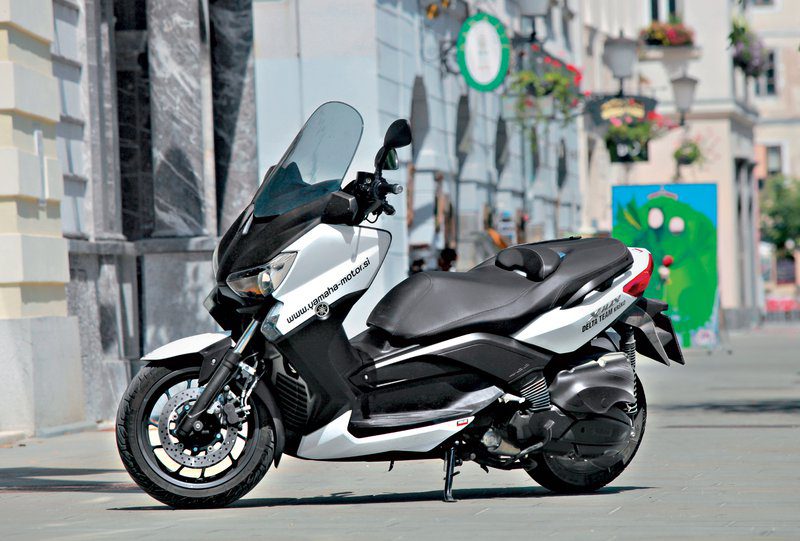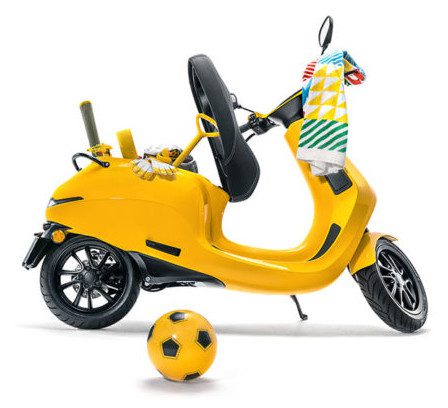
Test: Yamaha X-MAX 400
That the Yamaha X-Max is a compelling scooter was shown two years ago in our quarter-liter class scooter comparison test. The majority opinion confirmed that the X-Max easily competes with Italian and Japanese competitors. But now in the world of scooters, the trend is exactly the opposite, as in the car. There is no spirit, no rumors about the so-called downsizing, and larger and more powerful models, to the delight of customers (mostly for money), fill in the gaps between the most powerful and the smallest maxi.
From a technical standpoint, the 400cc X-Max is not just an upgraded model with a more powerful engine. Its essence, the convincing powertrain (mainly known from the Majesty model), serves as the basis around which almost everything has changed compared to the quarter-liter model. It is clear that it is slightly larger and technically adapted to the requirements of a half power engine. However, Yamaha seems to have had some issues placing this model in their fleet.
First of all, it was necessary to make sure that the X-Max, which is almost four thousandths cheaper, will not be as first-class as the flagship T-Max, and at the same time, it should not jeopardize the sale of the model. comfortable and prestigious Majesty model. In addition, however, customer expectations in this class are slightly higher than in the smaller quarter-liter class. Taking into account all these facts and limitations dictated by its own fleet, Yamaha decided that the X-Max will not be liked by the majority, but only by many.
This is why some of the disadvantages that we will list should not be taken too seriously, but take them into account if they may bother you at any time.

Wind protection. This is very modest, but considering that such a powerful scooter still flirts with the desire for slightly longer trips, as well as bad weather conditions, we would like more.
Comfort. The hard seat and, regardless of the setting, probably the stiffest rear suspension for driver and passenger on bad roads, are literally knocked out. At the same time, it is this hardness that has a beneficial effect on driving performance. No, there is nothing wrong with driving performance. Rides hard, leans heavily. Pleasant karting between scooters.
Little things that are a little annoying and to some extent also a habit can include an unlit trunk, close mirrors, a seat unlocking requiring both hands, and too little knee room for really very large drivers.
However, the merits of this scooter must be taken seriously. These guarantees include an engine that shakes nicely at low revs, is very lively and moderate in consumption. The drivetrain spins fast, at 120 km / h at roughly 6.000 rpm, and judging from the feel, this is the last acceptable cruising speed that doesn't put too much stress on technology. The brakes are also excellent, optionally from the fall, too, with ABS. Stronger lever pressure is required for a secure and quick stop, and the dosing of the braking force is very precise and well felt. The space under the seat is large and there are two storage boxes under the steering wheel. It is also necessary to emphasize stability and maneuverability.
Sporty, pleasant, useful, comfortable. Thus, the main characteristics of this scooter would follow each other in the same order if they were rated with a rating from five to the bottom. And since there are quite a few scooters among us that are perfect for this order, we can safely say that the X-Max as a whole can be a good choice. One more pot of Akrapovich and that's it. But this is not ideal. Who is this?
Text: Matyazh Tomazic, photo: Sasha Kapetanovich
Basic data
Sales: Delta Krško team
Test model cost: 5.890 €
Technical information
engine: 395 cm3, single-cylinder, four-stroke, water-cooled.
Power: 23,2 kW (31,4 KM) at 7.500/min.
Torque: 34 Nm @ 6.000 rpm
Energy transfer: automatic transmission, variomat.
Frame: pipe frame.
brakes: front 2 spools 267 mm, two-piston calipers, rear 1 spool 267, two-piston caliper.
Suspension: front telescopic fork, rear double shock absorber with adjustable spring tension.
Tires: front 120/70 R15, rear 150/70 R13.
Growth: 785 mm.
Fuel tank: 14 liters.
Weight: 211 kg (ready to ride).
We praise and reproach
driving performance and performance
brakes
storage boxes
unlit trunk
no emergency stop switch
too stiff suspension regardless of the setting
